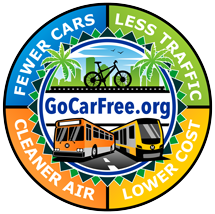
Lesson 10
Off the Rails: Mastering Mass Transit
“If you think about it, some of the most meaningless times in life are spent in a car.”
– Jim Viehman
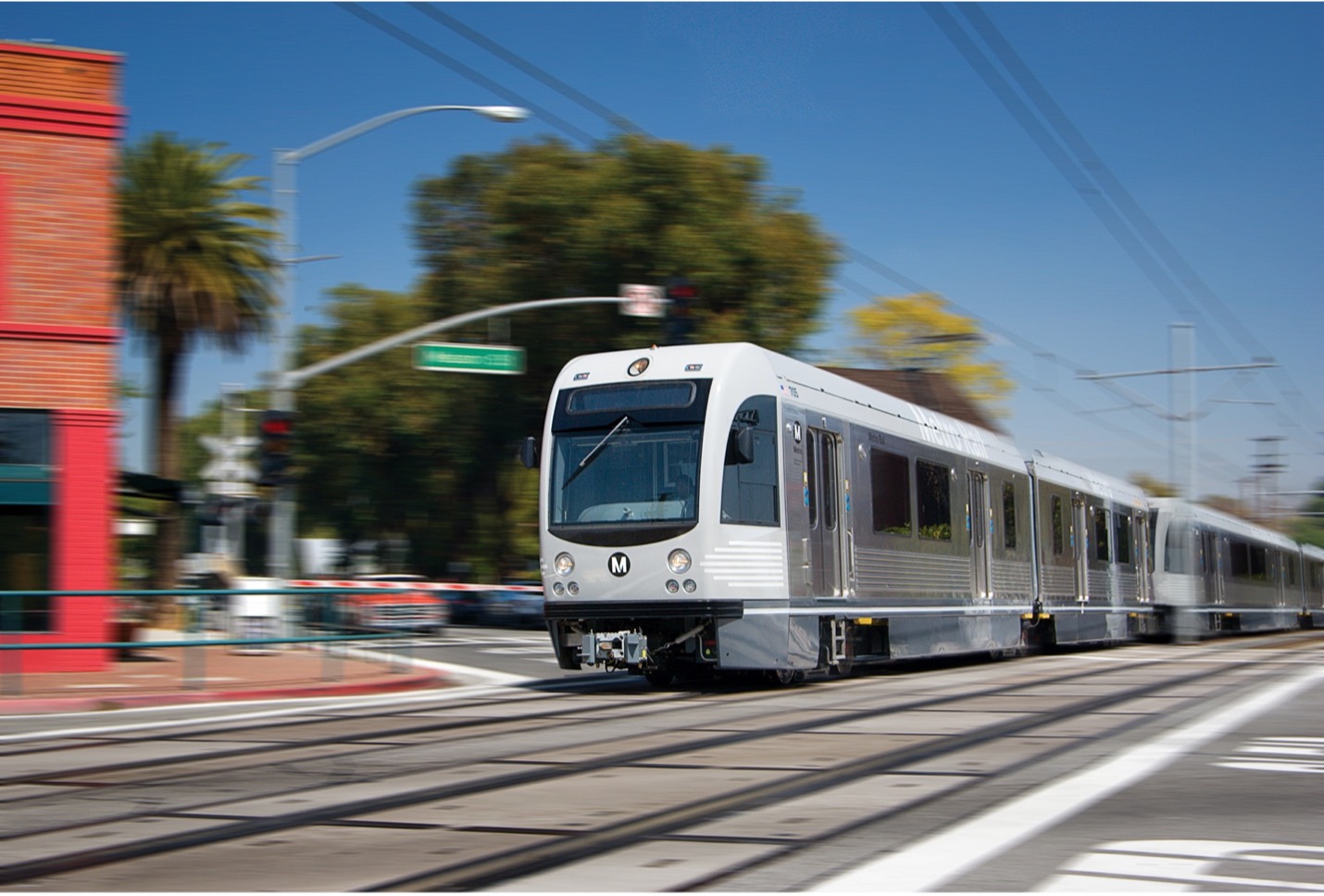
If you want to avoid high gas prices and minimize the stress of commuting, then let someone else do the driving for you. Mass transit comes in many forms – bus, train, subway, ferry, light rail, heavy rail – and it has considerable advantages over driving your own car.
Most cities in the United States have some form of public transit system. Larger cities have any number of modes of mass transit. The odds are good that your city has an efficient and cost-effective way to get you where you need to go.
Car Free Success Story:
As our freeways become more clogged with cars, many commuters realize the benefits of taking the bus, commuter rail, and subway. In Southern California, often the commute time on mass transit is equal to or shorter than by car. I utilize transit agencies in five counties to go wherever I want, without the hassles that car drivers deal with.
Don’t Be a Transit Snob
Unfortunately, many car owners are “transit snobs.” People who say things like, “I wouldn’t be caught dead riding the bus.” That’s too bad, because mass transit has come a long way in recent years. Public transportation is an $81 billion industry that employs 430,000 workers.
According to the Center for Transportation Excellence, the average income of rail commuters in the U.S. is $50,000. And according to the American Public Transportation Association (APTA), Americans take 34 million rides on transit every single weekday.
There are lots of reasons why so many people use public transportation. First, it costs just a fraction of what driving a car costs. Second, it eliminates many of the hassles of commuting by car. And third, the brightest minds in architecture, design, and urban planning have spent decades researching and developing the best ways to move people around cities. The fruits of their research are modern mass transit systems that are:
- User friendly
- Safe
- Clean
- Reliable
- Heated and air conditioned
- Dry and sheltered from the weather
- Efficient
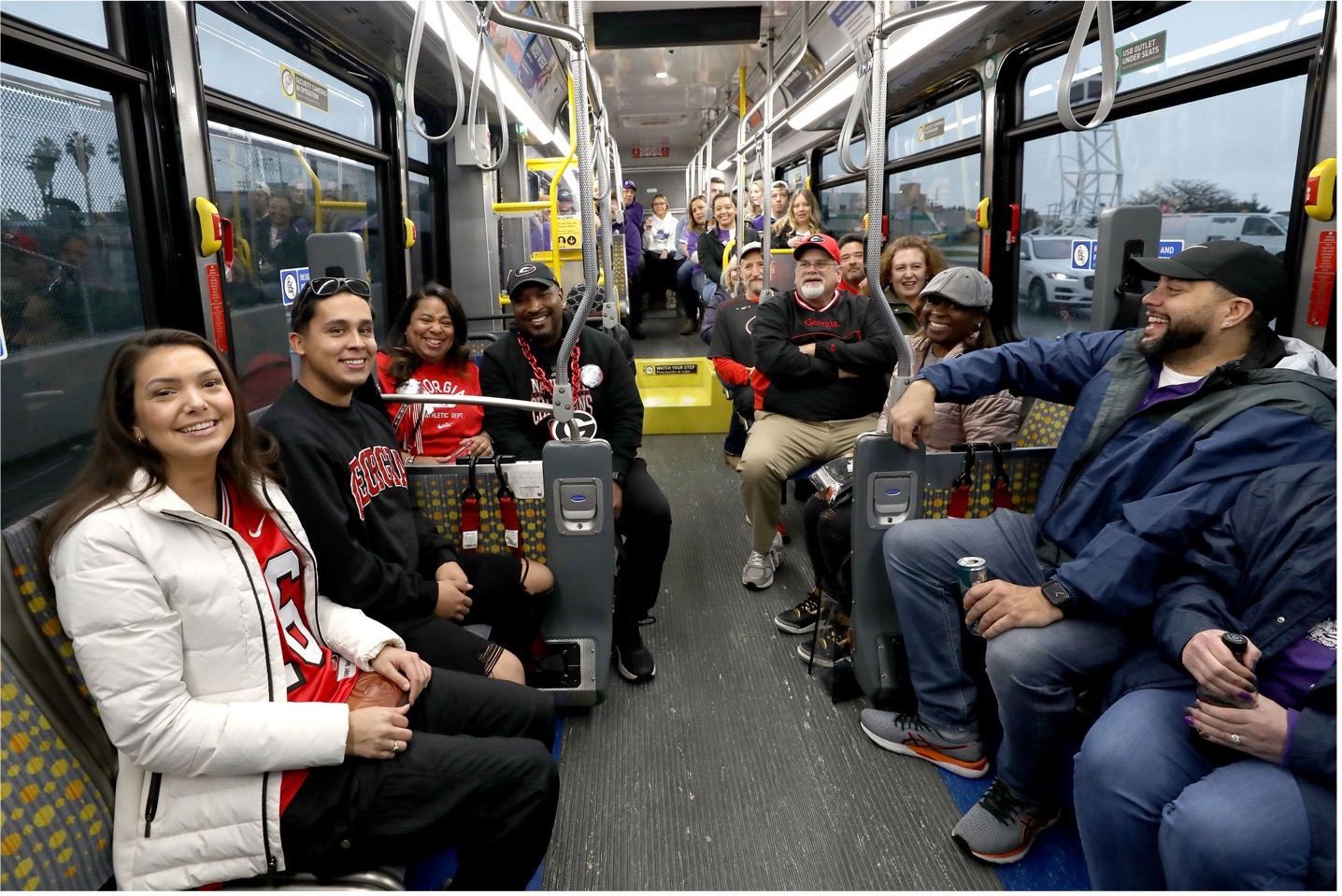
Not only that, mass transit systems are designed to:
- Go to the most popular places, like universities, sports stadiums, arenas, shopping centers, and hospitals
- Run with greater frequency during peak hours
- Run at convenient times
- Connect to other forms of transportation, like airports
Mass transit also helps alleviate traffic congestion, which is one of the primary barriers to economic growth in cities around the country.
Efficient public transportation helps attract new businesses, major conventions, and national sporting events. For example, when cities around the world bid to host the Olympic Games or the World Cup, public transportation infrastructure is one of the essential requirements.
Mass transit also provides mobility for seniors and the disabled.
Panhandling and soliciting are strictly prohibited on virtually all forms of public transportation.
Car Free Success Story:
There’s certainly a lot more variety in the people I meet on the train than in my regular circle of friends and acquaintances. It’s taught me to have fewer preconceptions and to listen better. Most of the people on the train are just regular people. I admit that I tend to look down my nose at people who aren’t imaginative or caring enough to try getting out of their cars and taking a different, more sustainable, and more interesting route to work.
It’s Faster Than You Think
“Riding the bus takes too long.” This is a common misperception about mass transit. When you factor in all the time needed to keep a car clean, fueled, maintained, parked, and paid for… commuting by mass transit may actually take much less of your time.
For example, when you take the bus or train to work, you don’t have to drive to the top of a multilevel garage looking for a parking spot. You don’t have to leave work every two hours to feed a parking meter. You don’t have to stop at a service station to fill up with gas. You don’t have to wait for your car to warm up on a cold morning, or scrape ice off your windshield. And rail commuters don’t get bogged down in rush-hour traffic jams.
It’s Less Stressful
The beauty of letting someone else drive is that you get to sit back and relax. You don’t have to worry about tailgaiters, bad drivers, cars cutting you off, or other drivers slamming on their brakes in front of you. And you’ll never get road rage or be a victim of it. Heck, you can even take a nap. Relax and let someone else worry about the driving.
Transit Time Is Productive Time
When you drive a car to work, you have to concentrate on the road and on the other drivers around you. Looking at your phone while driving is no only illegal, it’s downright dangerous. So multitasking is at a minimum. At most, you can talk on your cell phone or listen to mindless chatter and commercials the radio.
But when you let someone else drive, you can actually make your commute a productive part of your day. You can read the news, catch up on emails, work on a laptop computer, watch a movie, write memos, practice a presentation, read a book, learn on second language, or study for a graduate degree.
I keep a manila file folder in my backpack labeled “Metro Reading.” Whenever I come across something that I’d like to read but don’t have time to during the day, I throw it in that file and read it on the train.
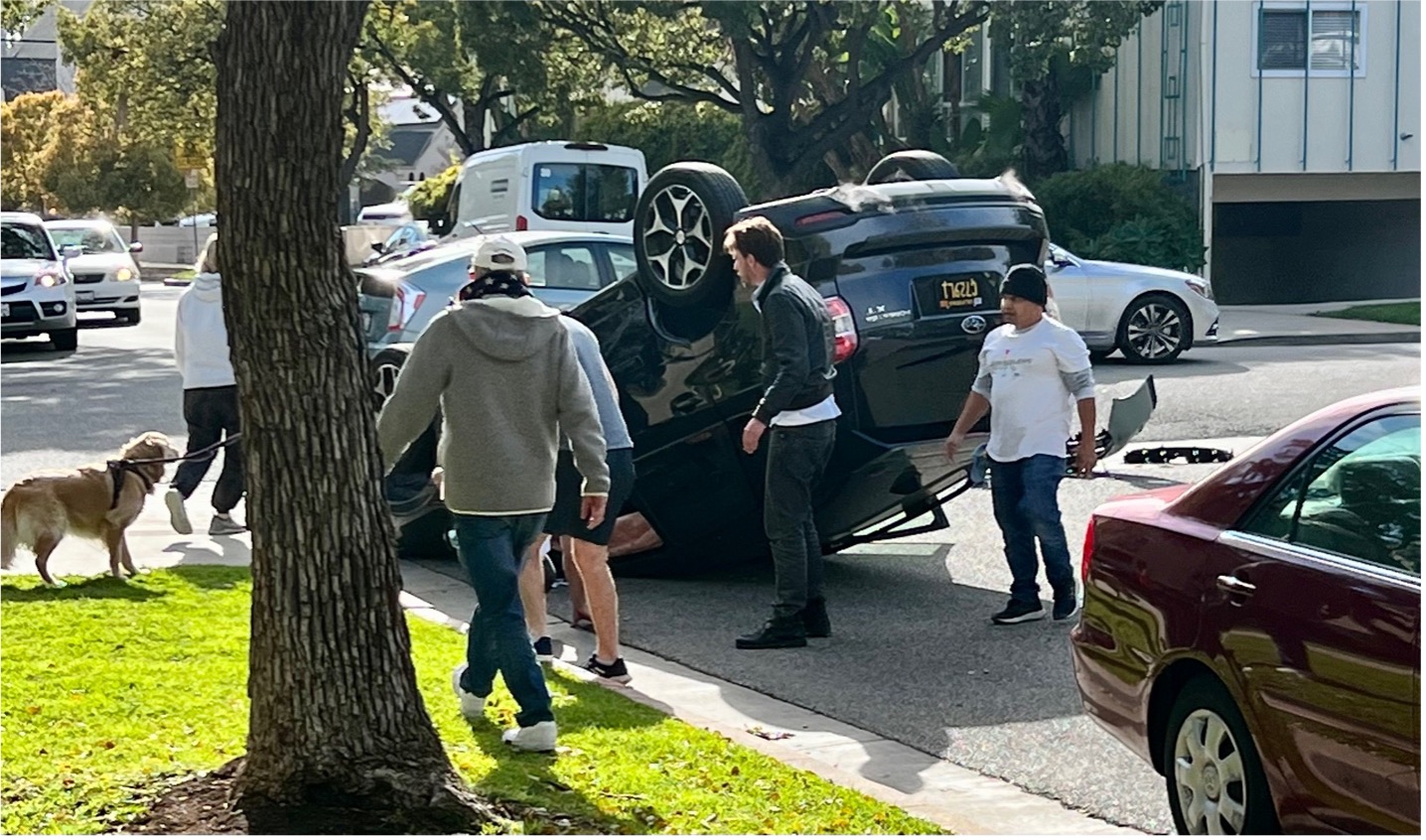
Way, Way Safer Than Driving
The New York Times recently published an article titled “Why You’re Probably Not So Great at Risk Assessment.” In it, journalist A.C. Shilton wrote, “Humans are not actually very good at assessing risk — especially their own risk, said Marie Helweg-Larsen, a professor of psychology at Dickinson College.”
A great example of this human inability to weigh relative risks can be seen in how some people view mass transit vs. driving. A colleague once said to me, “Taking the bus is too dangerous. I’d rather drive.” Wow. If the person who said that would only look at the actual numbers they might come to a very different conclusion. So let’s look at the numbers.
Riding a bus is about eighty times safer than traveling by car. Taking the train or light rail is forty times safer than driving. And, yes, these figures take into account that many more people drive every day than use public transportation. According to the National Safety Council, the number of deaths per 100 million miles traveled by car is 0.79, by commuter railroad 0.02, and by transit bus 0.01.
According to Statista.com, there were 1,255 assaults reported on public transportation systems in the year 2021 and a few hundred property crimes (the most recent statistics available, see graphic below). By contrast, the FBI’s Uniform Crime Report indicates the number of motor vehicles stolen in the U.S. in the year 2019 was over 900,000. The number of cars broken into exceeded two million.
The number of carjackings – a violent crime – was more than 34,000, and that number has been rising since. Seventy-four percent of carjackings involve a weapon, and 24 percent result in injuries to the victim(s). According to the FBI, there were 11,000 robberies at gas stations in 2020; firearms were involved in 42 percent of robbery incidents.
According to this article from CBS News, “In 2020, Americans suffered $7.4 billion in losses due to motor vehicle theft, according to the FBI. According to the Council on Criminal Justice, ‘Added to these direct costs are the costs of other crimes, such as robberies, burglaries, and drive-by shootings, that motor vehicle thefts help to facilitate.’”
As you can see, if you weigh the relative risk of taking mass transit vs. driving there is no comparison.
In general, criminals avoid public transit systems because they’re monitored by closed-circuit video cameras and patrolled by uniformed and nonuniformed security officers. Most public transit systems now have silent alarms as well. These modern safety systems allow the driver to immediately notify police when disruptive behavior occurs. When the silent alarm is triggered, the destination sign on the outside of the bus or train flashes “EMERGENCY – CALL POLICE.”
Ironically, the most common crime reported in public transportation systems does not take place on buses, trains, or in subways. It happens in the parking lot. I’m talking about car theft and break-ins to unattended vehicles parked in commuter lots. If you’re car free you won’t have to worry about that.
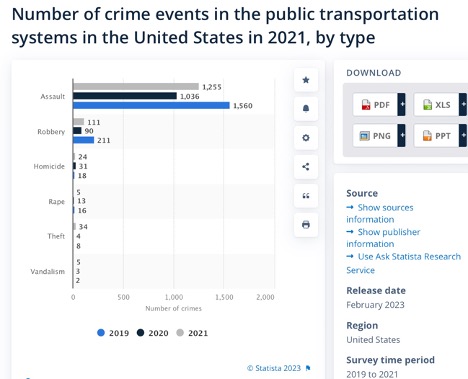
Transit Tips
A little experience goes a long way when riding public transportation. After a few trips, you’ll start to feel confident in your ability to navigate the system and get where you need to go. Soon you’ll settle into a comfortable routine.
But if you’ve never taken the bus or train before, here are a few beginner’s tips.
- Double-check the destination before boarding. This information is displayed prominently on the boarding side of every bus or train.
- Have exact change or a fare card ready to pay your fare.
- Let exiting passengers off before you board. Allow people with disabilities or special needs to board first.
- Buy a round-trip fare card to avoid waiting in line at fare card machines on your return trip. This is especially important after large events like concerts and ball games.
- If you carry a bag or purse, place the strap around your leg or arm to prevent accidentally leaving it on board.
- Keep all bags and luggage out of the aisles so other passengers don’t trip.
- Remember that schedules vary on weekends and holidays. And if you’ll be out late, check what time the last trip runs, so you don’t miss it. And have a backup.
Following these simple rules will make your public transportation experience more pleasant for you and for other passengers.
Those numbers may be a bit hard to get your mind around, so think of it this way. How would your life improve if you had an extra six hours of leisure time every week? You could spend six more hours with your family. You could spend an hour a day at the gym. You could train for a marathon. Write a book. Take a cooking class. Learn to play piano or guitar. Or get an extra hour of sleep every night. The possibilities are endless.
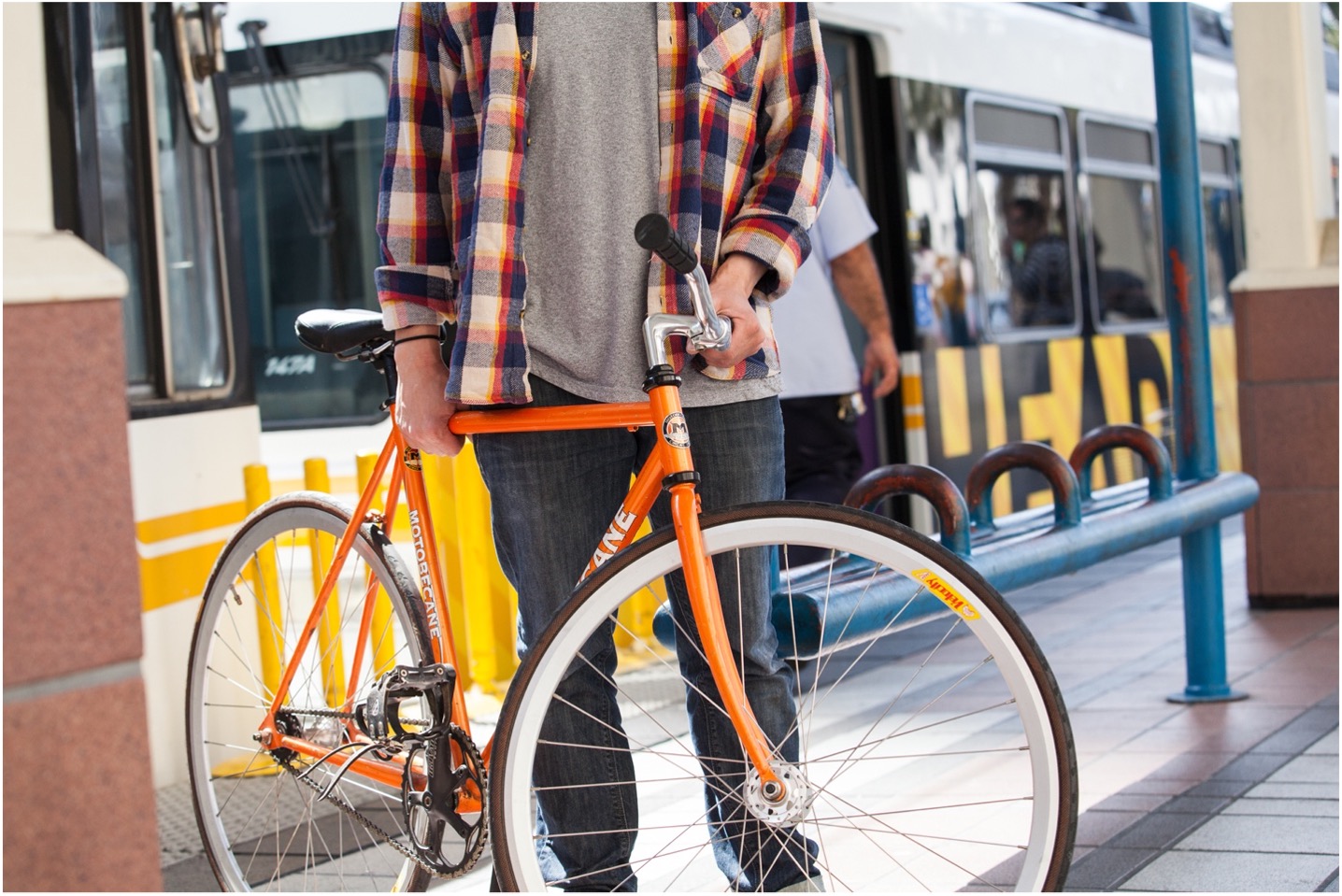
Bicycles and Mass Transit: A Winning Combination
One of the best ways to reach virtually all parts of your city without ever setting foot inside a car is to combine bicycling with mass transit. Most public transportation systems around the country now provide convenient bicycle racks on buses or allow bicycles inside commuter rail cars.
Here are some tips for taking your bike for a ride:
Taking Your Bike on the bus:
- Load your bike as quickly as possible so you don’t delay the bus and elicit snide remarks from other passengers.
- Be sure your bike is stowed properly in the exterior rack.
- Make sure the driver sees you while you’re loading and unloading your bike. Make eye contact.
- When your bike is on an exterior rack, try to sit toward the front of the bus so you can keep your bike in view.
- When exiting the bus, alert the driver that you will be unloading your bicycle.
- Never step to the street side of the bus to load or unload your bike.
Taking Your Bike on the Train:
• If you take your bike on a commuter rail car, hold the bike at all times and do not use the kickstand.
• Squeeze the bike’s brake handle when the train is accelerating or coming to a stop to prevent the bike from rolling.
• Don’t force your way onto a crowded train with your bike; wait for the next one.
• Keep you bike out of the aisles and away from the doors.
• Never ride your bike on the train platform; always walk it.
• If your bike is muddy or wet, spray it clean and wipe it down before boarding.
Car Free Success Story:
You really have to say, “how can I adapt my lifestyle to take advantage of the available transit?” rather than “how can transit best serve the lifestyle that I have already chosen?” One other important thing to mention about the convenience of transit is that you can get things done when you are on the bus or train. I have read a dozens of books during the past few years that I would never have read if I hadn’t had my daily transit time. I have also been able to work on my laptop computer. In fact, I started typing up my answers to these questions when I got on the bus this morning, and now I’m almost to where I get off the bus.
Getting the Best Deal
Most public transit agencies offer several different fare rates. The highest rate is usually the single trip fare. To ride Metrolink buses in St. Louis, for example, costs $1.00 for adults, and fifty cents for children and seniors. Metrolink train fare is $2.50. A monthly pass for unlimited use is $78.00 for adults and $39.00 for children and seniors.

In many cities you can also buy weekly passes, student passes, semester passes, and college universal passes. Some employers also have a negotiated rate with mass transit providers. To make sure you’re getting the best deal, be sure to visit your local transit provider’s website, or call to request a new rider information kit, and talk to your employer.
Car Free Success Story:
Most mass transit systems these days have good websites with trip planners. You can type in your start and end addresses, and it’ll tell you the route to take, which trains or buses to take and when. If you have a train system nearby, get a map and study it a bit. If there are just buses, then figure out what are the buses that run near you, or between you and work or you and downtown. Try riding them sometime when you’re not in a hurry; sit near the driver and ask them where to get off. I’ve never felt like I was in danger on a train or a bus. On the train, I often see people using laptop computers, messing with cell phones, and using iPads, so clearly these folks aren’t worried about getting robbed.
In my case, I look for jobs after we’re already settled. So I only job hunt at places I know I can get to by bicycle. I wouldn’t even bother applying for a job at a place that would require a long car commute. It does limit my employment options, but I know the car commute would have such a negative impact on my life, that it’s a trade-off I’m perfectly willing to make.
Try It, You’ll Like It
The best way to make up your mind about public transit is to give it a try. Plan a test trip for a Saturday or Sunday afternoon and make a few mental notes of what you like and don’t like about your experience. Your goal is to get a sense of whether public transit would work for your daily commute.
Be aware going in that this will feel different from your old routine of commuting by car. So view it as an adventure. Experiment. Enjoy the ride. Bring a book or surf the web on your phone. And always remember how much money you’ll be saving.
Transit Tips from Patricia Collins
The first time I go somewhere new on a bus, I usually explain that it is my first time on this line and ask the driver if he will call out my stop. They are usually happy to do so. If you are confused about fare costs or when the bus comes or when to pay, ask someone who is standing at your stop. They most likely have ridden before and can help you. Here are some etiquette tips:
- If you talk on your cell phone, do so quietly. Other people don’t want to hear your conversation.
- If you and another passenger are engaged in conversation, sit together, not across the aisle from each other.
- Don’t put a wet umbrella on the seat next to you. Someone will sit there later.
- If you are commuting during rush hour and the train is crowded, don’t put your backpack on the seat next to you. You are making someone who wants to sit down have to ask if they can have the seat.
